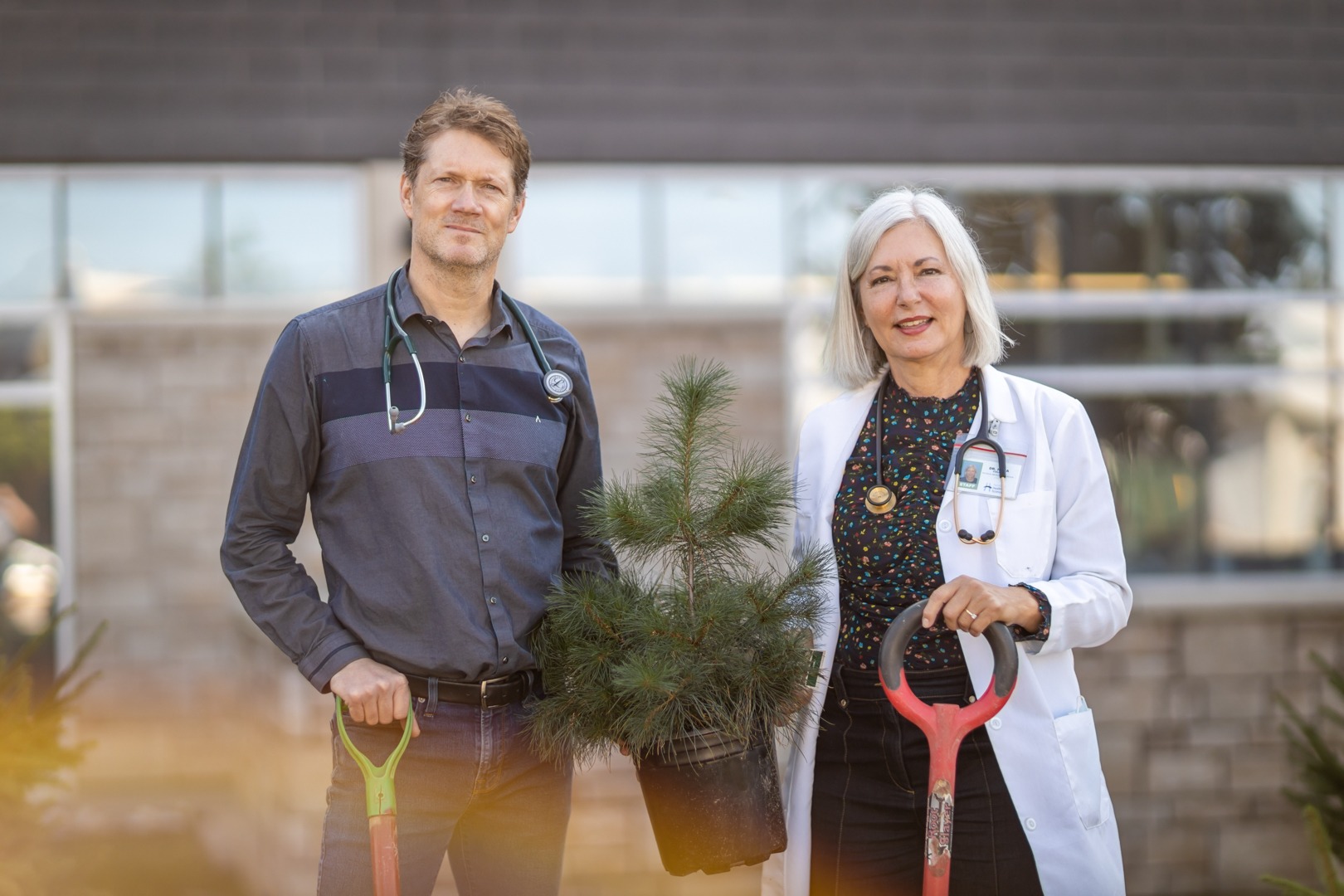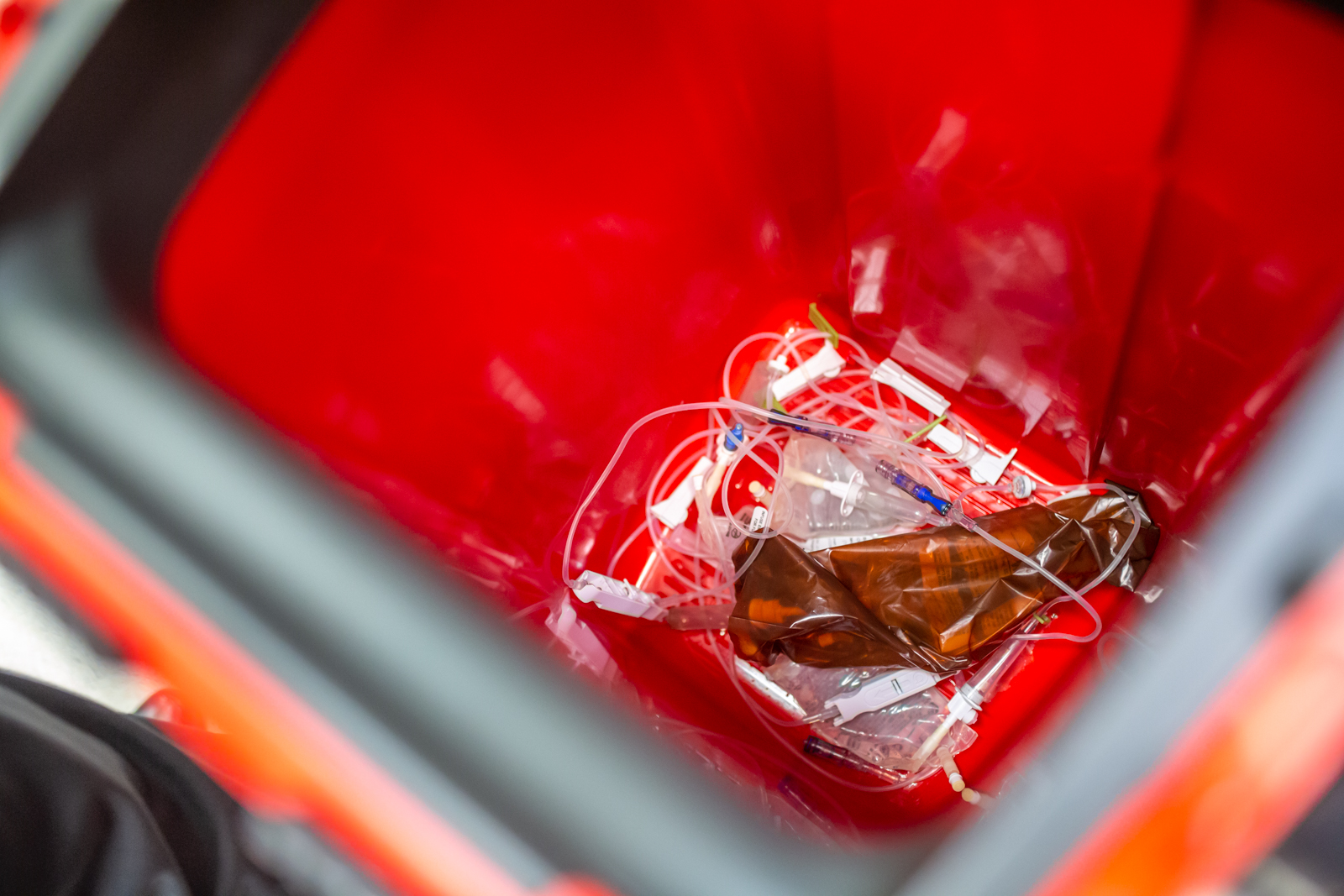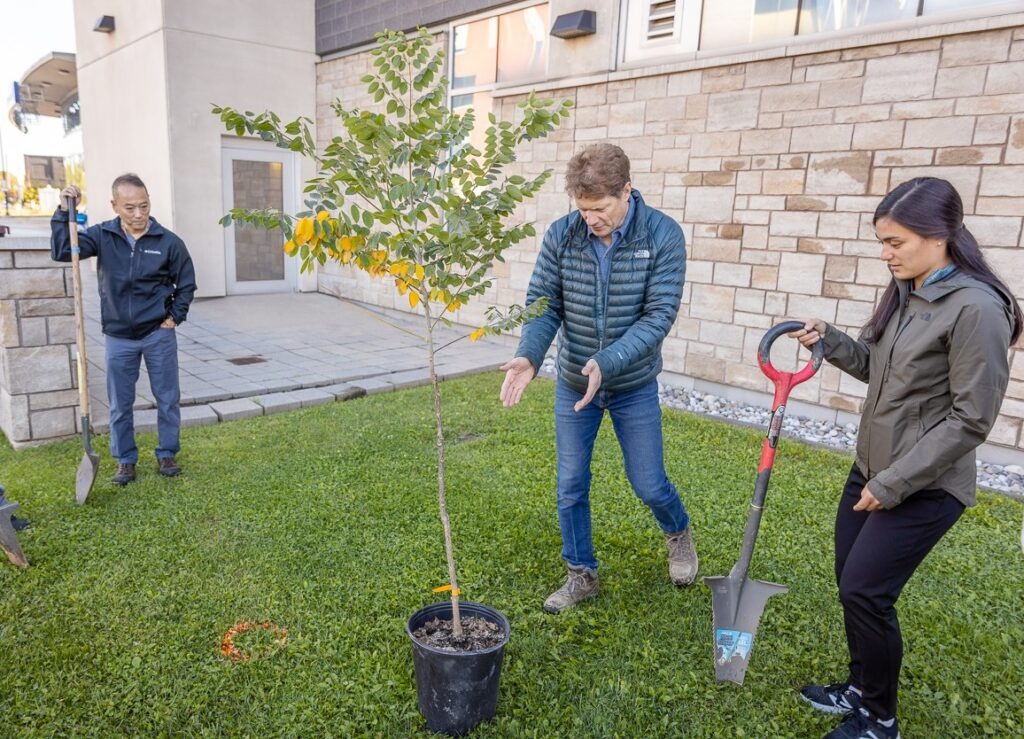
Environmental stewardship is good medicine

Earth Day is an annual, international event held every April 22 to show support for environmental protection and encourage change.
In recognition of Earth Day 2023, we’re sharing some of the ways that Hamilton Health Sciences has been working to improve upon our environmental stewardship.
Supporting green spaces
If Dr. Myles Sergeant could write a prescription for Hamilton, it would contain an order for one million more trees in the city, including on and near Hamilton Health Sciences (HHS) hospital sites. Sergeant belongs to several environmental groups including Trees for Hamilton, a local charitable organization he co-founded that plants trees in the city.

Dr. Myles Sergeant
“Trees for Hamilton aims to bring the forest to patients and the community,” says Sergeant, an HHS doctor based at our St. Peter’s Hospital where he specializes in complex care and aging.
A European-based study suggests that thousands of human heat-related deaths could be prevented by increasing the average tree coverage in cities from 15 to 30 per cent. It was estimated that this would cool cities enough to save lives, says Sergeant, adding that Hamilton has about 19 per cent tree coverage.
One million more trees
“To reach 30 per cent we would need a lot more trees in Hamilton. It actually amounts to one million more trees,” he says.
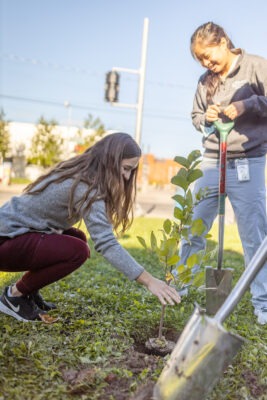
Staff from Hamilton General Hospital volunteered to plant trees at the site.
Planting more trees in cities, including on hospital property, would also help people’s physical and mental health, says Sergeant, adding that numerous studies support this. For example, a much-cited American study found that trees on hospital property can help patients recover faster. This study of gallbladder patients found that patients whose hospital-room windows looked out onto trees and nature healed, on average, a day faster than those whose windows faced a brick wall. Patients with a view of nature also needed less pain medication and had fewer postsurgical complications, the study found.
Other studies have found that older adults with park access report having better health, and proximity to green space results in reduced symptoms for mental health issues including depression and anxiety.
Last fall, Sergeant helped launch an Ontario-wide initiative to plant thousands of trees at hospital and health-care facilities across the province over the next five to 10 years. For the launch, a group of volunteers including HHS staff planted trees at our Hamilton General Hospital and St. Peter’s Hospital. Since 2018, Trees for Hamilton has planted over 100 native trees across HHS.
Reducing our carbon footprint
“Climate change is the greatest challenge of the 21st century, threatening human health and development,” says Sergeant.
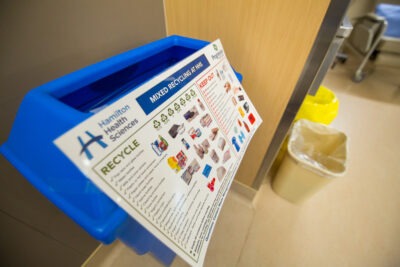
HHS recycled 1,763 metric tonnes of material in 2022, including plastic bottles, tins, cardboard, paper, LEDs, batteries and scrap metal.
Carbon dioxide (CO2) in the atmosphere warms the planet, causing climate change. According to the international Earth Day website EarthDay.org, forests are collectively the second biggest storehouse of carbon after oceans, absorbing significant amounts of greenhouse gases. This makes tree planting a nature-based climate solution, but trees can’t do this work alone, says Sergeant. People and organizations worldwide need to improve their environmental stewardship.
Hamilton Health Sciences recognizes that patient care services directly impact the health of the environment which, in turn, affects the health of our community. Here are some ways — beyond supporting tree planting on hospital property — that HHS is working to improve its environmental stewardship:
Emissions: Through significant capital investment and an overhaul of the hospital’s co-generation facilities, in 2022 HHS reduced greenhouse gas emissions by 47.52 per cent compared to 2016, the baseline year used to track changes and improvements over time. This represents the equivalent of taking 10,858 cars off the road and brings HHS closer to net-zero emissions.

Victoria Brzozowski, environmental management lead.
“This is being accomplished largely by upgrading facilities’ equipment and relying less on cogeneration which uses natural gas to power hospital sites,” says Victoria Brzozowski, HHS environmental management lead. “We’ve been changing how and when we use those generators versus when we purchase electricity off the grid.”
Waste reduction:
Hamilton Health Sciences recycled 1,763 metric tonnes of material in 2022, diverting 40 per cent of hospital waste from landfill.
This included plastic bottles, tins, cardboard, paper, LEDs, batteries and scrap metal. Hamilton Health Sciences also launched other waste reduction initiatives, such as starting a recycling program for polyvinyl chloride (PVC) plastics and a mask diversion program that has saved over one million masks from landfill since late 2020.
Award-winning efforts:
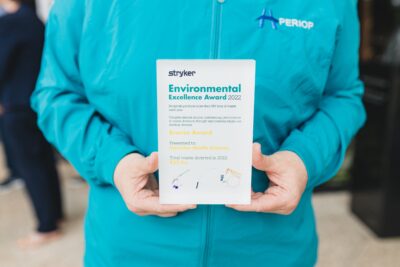
Environmental Excellence Award
HHS received a Sustainability Award for Environmental Excellence from Stryker, one of the world’s leading companies of medical and surgical equipment.
The award was presented to HHS’ Perioperative Services team at McMaster University Medical Centre earlier this month. In 2022, HHS successfully diverted 823 lbs. of waste from landfills through its single-use medical device reprocessing efforts, earning a Bronze-level award of environmental excellence.
Virtual visits:

Benefits of virtual visits include keeping more cars off the road. Stock photo.
As a result of COVID-19, HHS began providing virtual care to many outpatients by either phone or video conferencing during the pandemic instead of in-person appointments.
A 2022 summary of May visits found that 29 per cent of all outpatient visits were virtual, saving over one million kilometres of travel in that month alone. Since then, more in-person appointments have returned though many patients still have virtual appointments.
New Epic hospital information system:
Upgrading to Epic, HHS’ new electronic hospital information system, has already drastically reduced paper use. Since Epic launched in June 2022, HHS has saved 86,580 pounds (39.27 metric tonnes) of paper products across all sites. This is the equivalent weight of six elephants.
New build:
During construction of the new HHS’ West Lincoln Memorial Hospital in Grimsby, which is currently underway, 37,000 kg of greenhouse gas emissions will be avoided through green building practices.
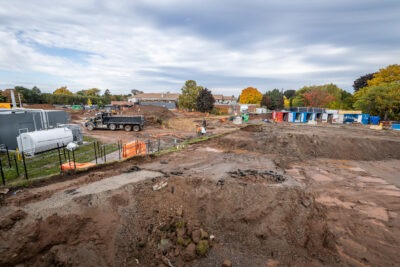
West Lincoln Memorial Hospital construction site.
This is equivalent to 152,648 km driven by an average gasoline-powered passenger vehicle.
The new hospital’s roof will include approximately 2,400 square metres of solar modules with multiple solar panels to take care of the building’s energy needs. This is equivalent to enough energy to power 7,457 laptops or 75,000 phones.
During construction, some 85 per cent of waste will be diverted, which includes metals, concrete, gypsum board, cardboard, plastic, clean wood and general waste. This will help reduce the impacts of climate change and greenhouse gas emissions.
This story includes information from the hospital’s 2022 Environmental Performance Report, which gives data from the 2021 calendar year. The 2023 report will be available later this spring. To find out more about Earth Day initiatives in Canada and worldwide visit EarthDay.ca and EarthDay.org.

